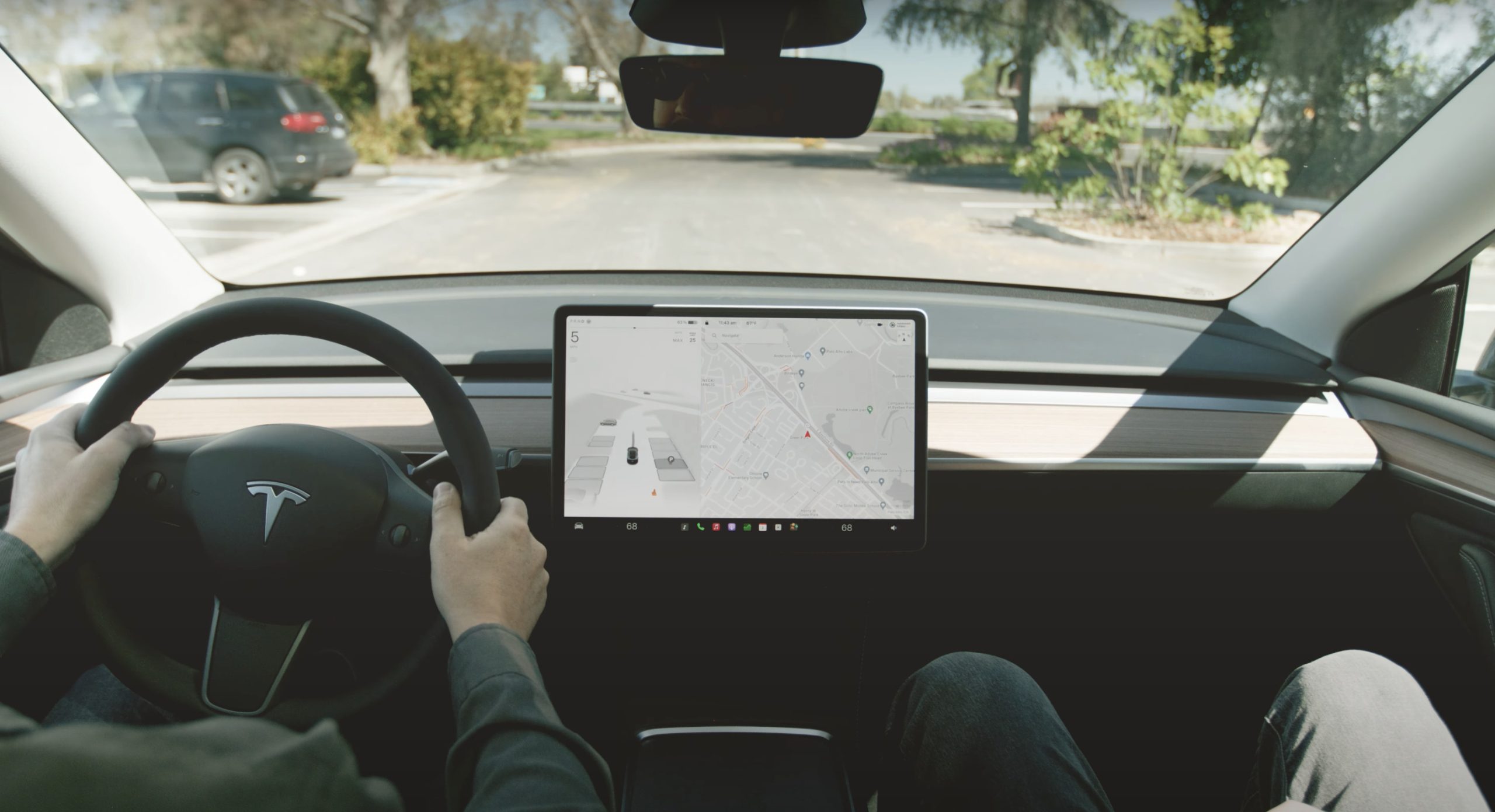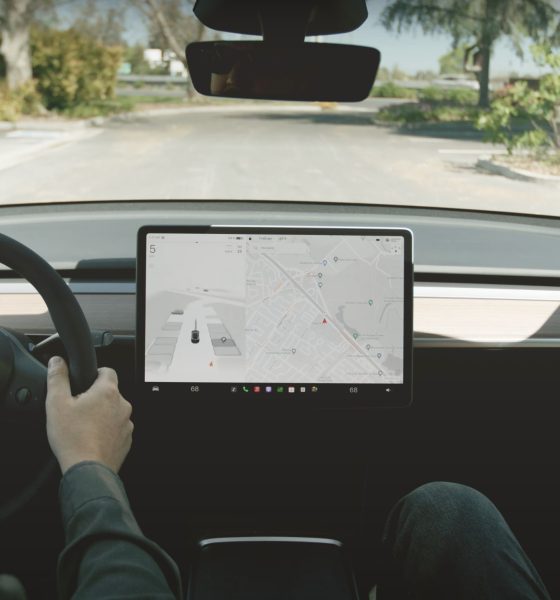

News
Drivers using ‘cooperative steering’ more likely to stay engaged: IIHS
A new study from the Insurance Institute for Highway Safety (IIHS) has highlighted the potential benefits to “cooperative steering” automated driving systems in keeping drivers engaged.
The study found that the likelihood a driver will remain engaged when driving with partially automated systems is higher when using “cooperative steering,” in which manual movements to the steering wheel don’t disengage the software, according to the study results shared in a press release on Tuesday. Inversely, those using partially automated systems that turn off when drivers use the steering wheel were less likely to take an active role.
“These results suggest that small differences in system design can nudge drivers toward safer habits,” said David Harkey, IIHS President.
This recent study looked at survey responses from 1,260 owners of vehicles from Ford, General Motors (GM), Nissan/Infiniti, and Tesla, who regularly use their partially automated driving systems.
Drivers who are used to partial automation that switches off when they try to share control over the steering were found to be less willing to steer or put their hands on the wheel in circumstances that required steering adjustments, while systems with some degree of manual steering were more likely to help drivers remain engaged with the road and take an active role when road scenarios demanded it.
Those with cooperative systems were ultimately 36 percent more likely than the others to say they would steer to one side of the travel lane when needed.
Drivers with vehicle systems that did offer shared control were 40 to 48 percent less likely than the others to say they would keep their hands off the wheel in situations that would make most drivers nervous, while two other recent IIHS studies showed that even those warned to remain engaged did not often do so.
Systems that remain on when drivers adjust steering include Ford’s BlueCruise system and Nissan/Infiniti’s ProPILOT Assist system, while both GM’s Super Cruise and Tesla’s Autopilot disengaged from lane-centering upon receiving driver steering inputs. While both the systems from Tesla and Nissan required drivers to keep their hands on the steering wheel, Tesla’s upgraded Supervised Full Self-Driving (FSD) allows some hands-free driving, and so do the aforementioned Ford and GM systems.
“Those are sizable differences,” said Alexandra Mueller, IIHS Research Scientist and Lead Author of the study. “Although there could be many reasons, one plausible explanation is that systems that switch themselves off whenever the driver steers may make drivers less likely to want to intervene, as it’s a pain to reactivate the system again and again.”
“These findings suggest that cooperative steering may have an implicit influence on how willing drivers are to take action when the situation calls for it, regardless of how they think their system is designed,” Mueller added.
You can see the full study results from the IIHS here.
RELATED: Tesla highlights FSSD safety in edge case test videos
Tesla’s Full Self-Driving Supervised and Cybercab unveil
The news comes weeks after Tesla unveiled its Cybercab robotaxi, which is built without a steering wheel, an accelerator, or brake pedals. It also comes in response to the company’s longtime bet on completely autonomous driving, first through the deployment of its FSD Supervised system, which is eventually expected to unlock an unsupervised version that buyers can use in their own vehicles.
While Tesla’s bet on full autonomy will likely come to fruition in future years, discussions about driver engagement have been ongoing, especially as those using Supervised FSD and other partially automated driving systems have used them in unintended ways that weren’t approved by the manufacturers.
At least for now, driver attention remains an important part of the path to full autonomy, until systems become safe enough to be trusted without supervision. Until then, efforts to keep drivers engaged may prove fruitful, and Tesla and others have taken steps to monitor drivers more closely when they use these systems, in order to ensure full engagement and readiness to regain control of the vehicle when needed.
What are your thoughts? Let me know at zach@teslarati.com, find me on X at @zacharyvisconti, or send us tips at tips@teslarati.com.
IIHS tested Tesla Autopilot safeguards: Here’s what they found



Elon Musk
Elon Musk and Tesla AI Director share insights after empty driver seat Robotaxi rides
The executives’ unoccupied tests hint at the rapid progress of Tesla’s unsupervised Robotaxi efforts.

Tesla CEO Elon Musk and AI Director Ashok Elluswamy celebrated Christmas Eve by sharing personal experiences with Robotaxi vehicles that had no safety monitor or occupant in the driver’s seat. Musk described the system’s “perfect driving” around Austin, while Elluswamy posted video from the back seat, calling it “an amazing experience.”
The executives’ unoccupied tests hint at the rapid progress of Tesla’s unsupervised Robotaxi efforts.
Elon and Ashok’s firsthand Robotaxi insights
Prior to Musk and the Tesla AI Director’s posts, sightings of unmanned Teslas navigating public roads were widely shared on social media. One such vehicle was spotted in Austin, Texas, which Elon Musk acknowleged by stating that “Testing is underway with no occupants in the car.”
Based on his Christmas Eve post, Musk seemed to have tested an unmanned Tesla himself. “A Tesla with no safety monitor in the car and me sitting in the passenger seat took me all around Austin on Sunday with perfect driving,” Musk wrote in his post.
Elluswamy responded with a 2-minute video showing himself in the rear of an unmanned Tesla. The video featured the vehicle’s empty front seats, as well as its smooth handling through real-world traffic. He captioned his video with the words, “It’s an amazing experience!”
Towards Unsupervised operations
During an xAI Hackathon earlier this month, Elon Musk mentioned that Tesla owed be removing Safety Monitors from its Robotaxis in Austin in just three weeks. “Unsupervised is pretty much solved at this point. So there will be Tesla Robotaxis operating in Austin with no one in them. Not even anyone in the passenger seat in about three weeks,” he said. Musk echoed similar estimates at the 2025 Annual Shareholder Meeting and the Q3 2025 earnings call.
Considering the insights that were posted Musk and Elluswamy, it does appear that Tesla is working hard towards operating its Robotaxis with no safety monitors. This is quite impressive considering that the service was launched just earlier this year.
Elon Musk
Starlink passes 9 million active customers just weeks after hitting 8 million
The milestone highlights the accelerating growth of Starlink, which has now been adding over 20,000 new users per day.

SpaceX’s Starlink satellite internet service has continued its rapid global expansion, surpassing 9 million active customers just weeks after crossing the 8 million mark.
The milestone highlights the accelerating growth of Starlink, which has now been adding over 20,000 new users per day.
9 million customers
In a post on X, SpaceX stated that Starlink now serves over 9 million active users across 155 countries, territories, and markets. The company reached 8 million customers in early November, meaning it added roughly 1 million subscribers in under seven weeks, or about 21,275 new users on average per day.
“Starlink is connecting more than 9M active customers with high-speed internet across 155 countries, territories, and many other markets,” Starlink wrote in a post on its official X account. SpaceX President Gwynne Shotwell also celebrated the milestone on X. “A huge thank you to all of our customers and congrats to the Starlink team for such an incredible product,” she wrote.
That growth rate reflects both rising demand for broadband in underserved regions and Starlink’s expanding satellite constellation, which now includes more than 9,000 low-Earth-orbit satellites designed to deliver high-speed, low-latency internet worldwide.
Starlink’s momentum
Starlink’s momentum has been building up. SpaceX reported 4.6 million Starlink customers in December 2024, followed by 7 million by August 2025, and 8 million customers in November. Independent data also suggests Starlink usage is rising sharply, with Cloudflare reporting that global web traffic from Starlink users more than doubled in 2025, as noted in an Insider report.
Starlink’s momentum is increasingly tied to SpaceX’s broader financial outlook. Elon Musk has said the satellite network is “by far” the company’s largest revenue driver, and reports suggest SpaceX may be positioning itself for an initial public offering as soon as next year, with valuations estimated as high as $1.5 trillion. Musk has also suggested in the past that Starlink could have its own IPO in the future.
News
NVIDIA Director of Robotics: Tesla FSD v14 is the first AI to pass the “Physical Turing Test”
After testing FSD v14, Fan stated that his experience with FSD felt magical at first, but it soon started to feel like a routine.

NVIDIA Director of Robotics Jim Fan has praised Tesla’s Full Self-Driving (Supervised) v14 as the first AI to pass what he described as a “Physical Turing Test.”
After testing FSD v14, Fan stated that his experience with FSD felt magical at first, but it soon started to feel like a routine. And just like smartphones today, removing it now would “actively hurt.”
Jim Fan’s hands-on FSD v14 impressions
Fan, a leading researcher in embodied AI who is currently solving Physical AI at NVIDIA and spearheading the company’s Project GR00T initiative, noted that he actually was late to the Tesla game. He was, however, one of the first to try out FSD v14.
“I was very late to own a Tesla but among the earliest to try out FSD v14. It’s perhaps the first time I experience an AI that passes the Physical Turing Test: after a long day at work, you press a button, lay back, and couldn’t tell if a neural net or a human drove you home,” Fan wrote in a post on X.
Fan added: “Despite knowing exactly how robot learning works, I still find it magical watching the steering wheel turn by itself. First it feels surreal, next it becomes routine. Then, like the smartphone, taking it away actively hurts. This is how humanity gets rewired and glued to god-like technologies.”
The Physical Turing Test
The original Turing Test was conceived by Alan Turing in 1950, and it was aimed at determining if a machine could exhibit behavior that is equivalent to or indistinguishable from a human. By focusing on text-based conversations, the original Turing Test set a high bar for natural language processing and machine learning.
This test has been passed by today’s large language models. However, the capability to converse in a humanlike manner is a completely different challenge from performing real-world problem-solving or physical interactions. Thus, Fan introduced the Physical Turing Test, which challenges AI systems to demonstrate intelligence through physical actions.
Based on Fan’s comments, Tesla has demonstrated these intelligent physical actions with FSD v14. Elon Musk agreed with the NVIDIA executive, stating in a post on X that with FSD v14, “you can sense the sentience maturing.” Musk also praised Tesla AI, calling it the best “real-world AI” today.








